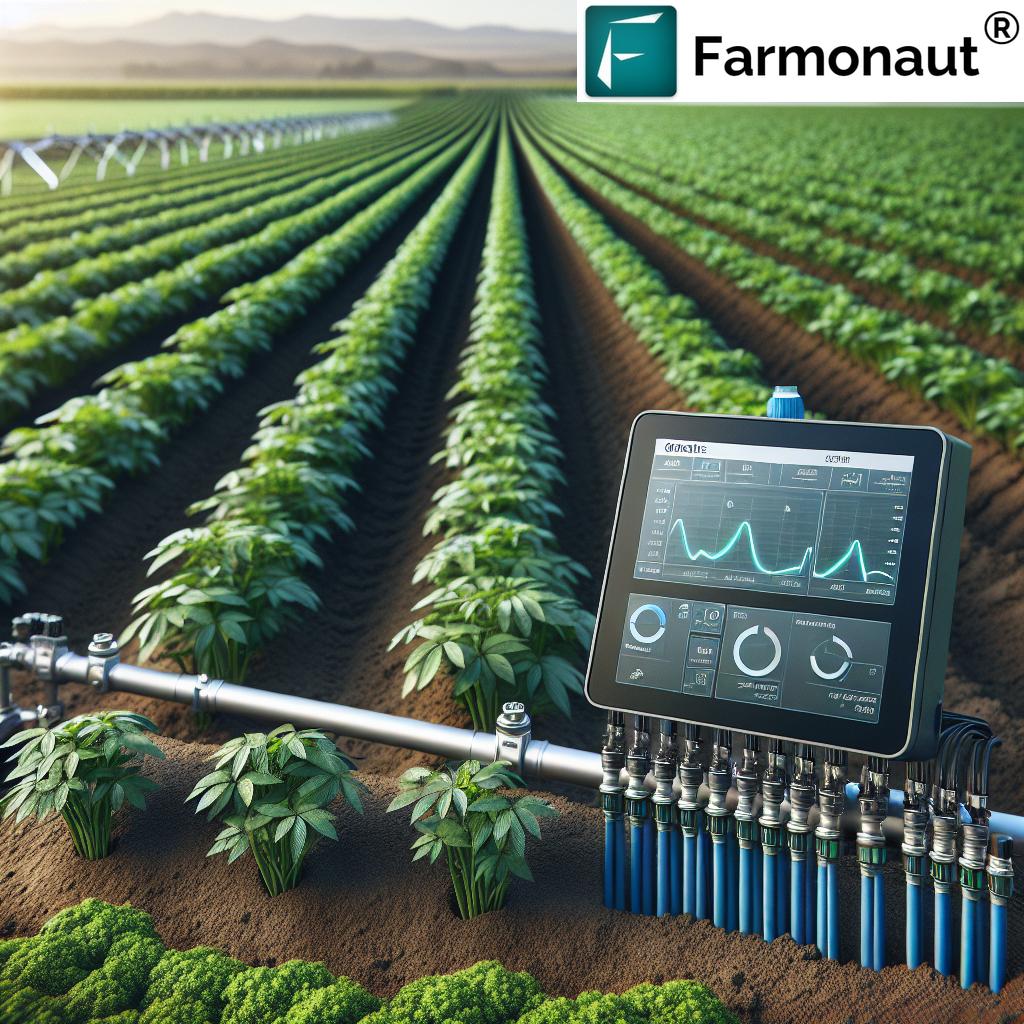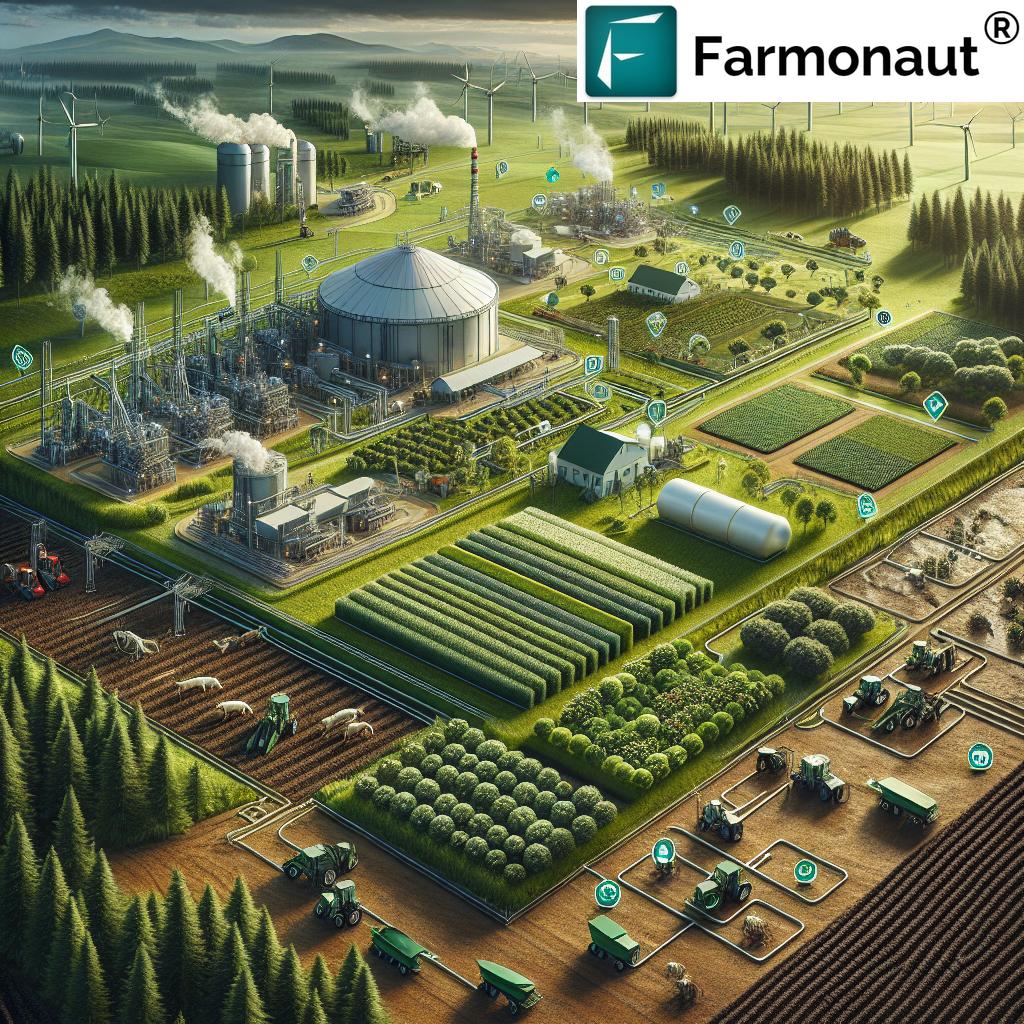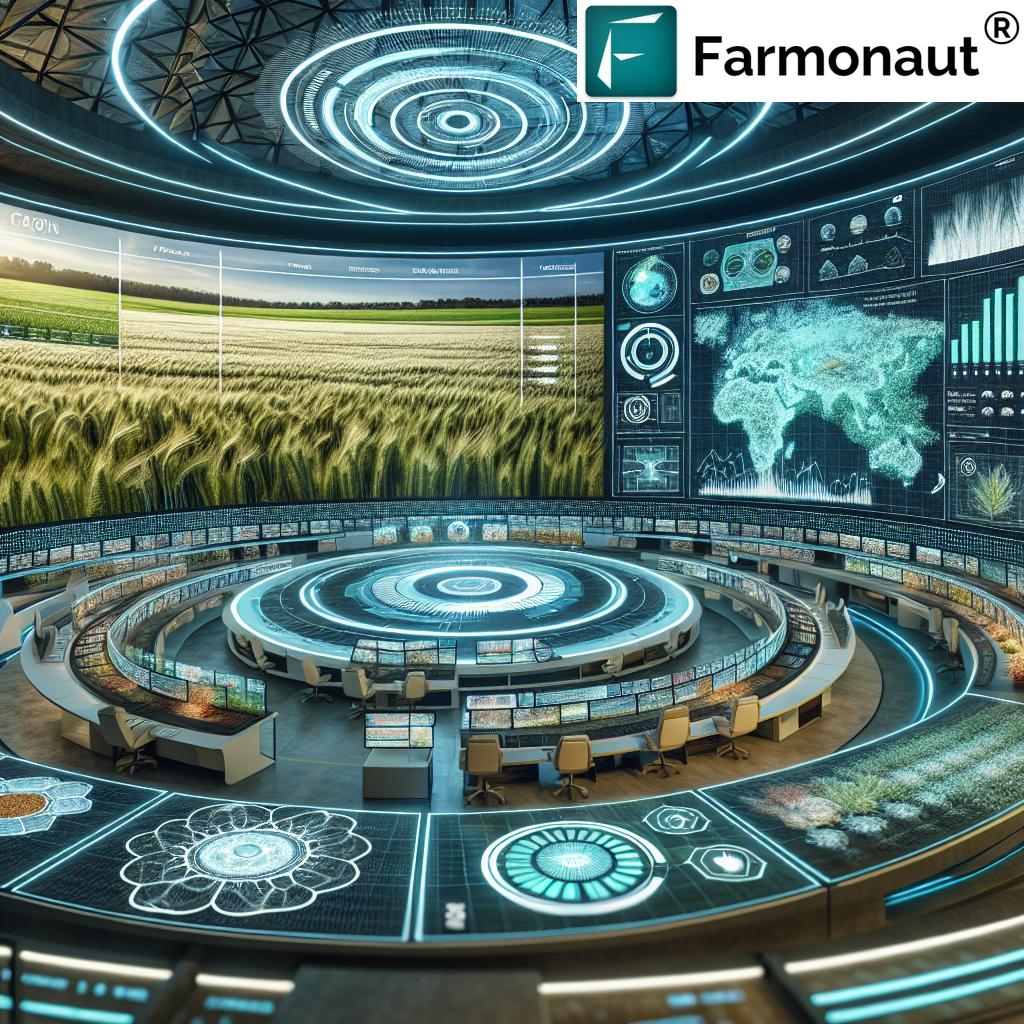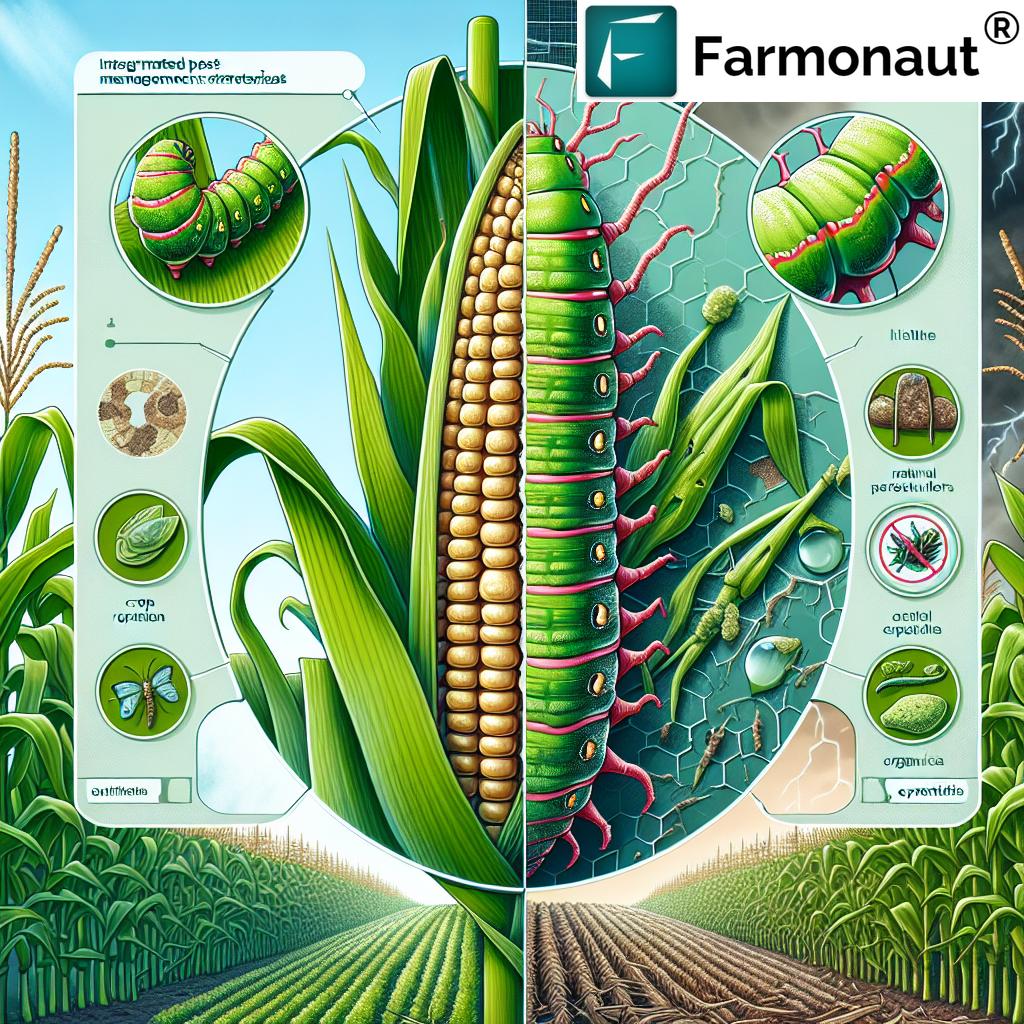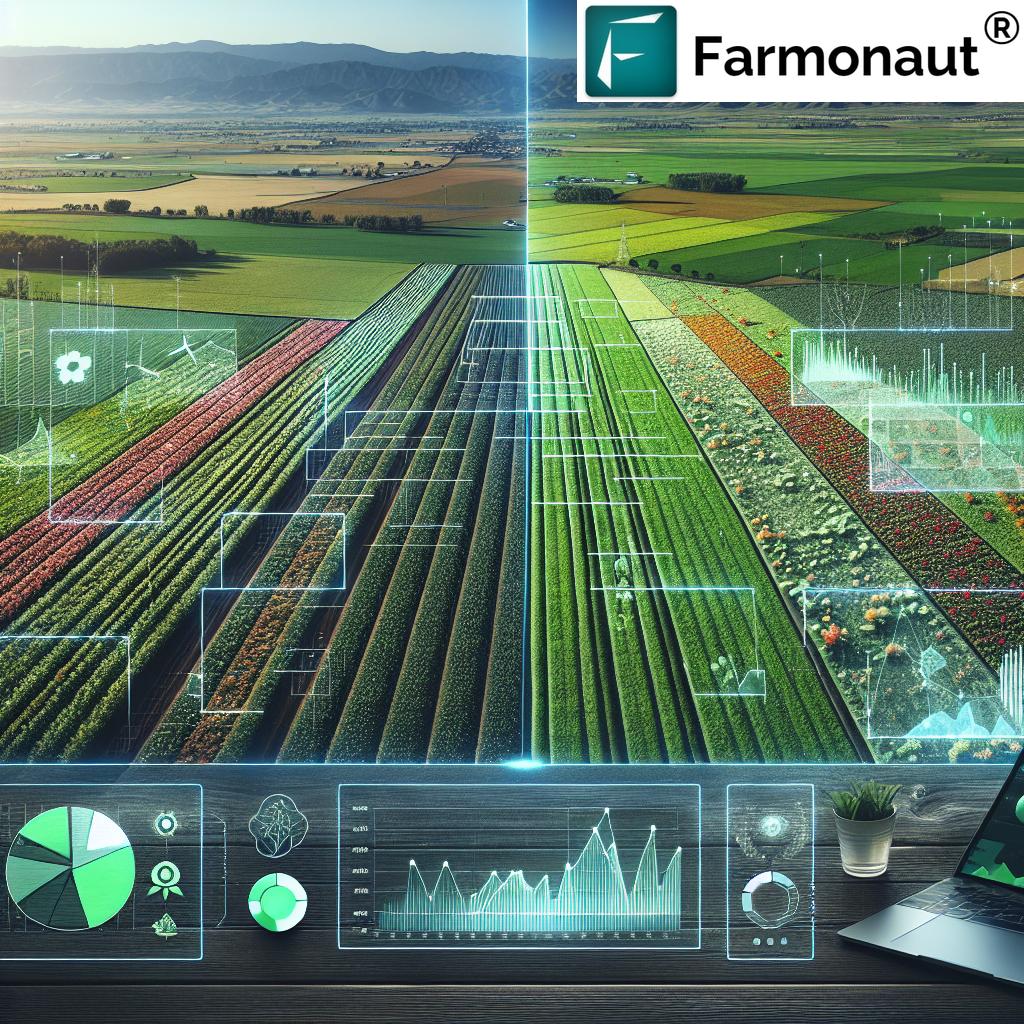New Technologies for Agriculture: 2025 Essential Guide
Meta description: New technologies for agriculture in 2025—precision sensing, AI, robots, gene editing, and CEA—reduce inputs, lift yields, and build climate resilience.
“2025 CEA farms recycle 90–95% of water, delivering 2–4x yield per square meter versus open fields.”
By 2025, agriculture is being reshaped by new technologies and methods in agriculture that are more than isolated gadgets. These are interlocking, integrated systems: sensors and satellites feed AI models that guide robots, gene editing, regenerative practices, precision irrigation, and digital platforms. The result is clear: farms can reduce inputs, increase yields, cut emissions per kilogram of produce, and strengthen climate resilience. This essential guide outlines new technologies for agriculture that are foundational for 2025 and beyond—what new methods and technologies revolutionized agriculture, why they matter, and how to adopt them effectively.
Table of Contents
- New technologies and methods in agriculture: an integrated 2025 suite
- Precision sensing and data analytics — the foundational layer
- AI decision support and predictive models
- Robotics and automation across field operations
- Controlled Environment Agriculture (CEA): vertical farms and greenhouses
- Biological innovations: gene editing, biofertilizers, and biopesticides
- Water and nutrient management: precision irrigation and circular systems
- Digital platforms, marketplaces, financing, and data governance
- 2025 Agri-Tech Impact & ROI Summary (comparison matrix)
New technologies and methods in agriculture: an integrated 2025 suite
In 2025, agriculture is no longer about picking tools off a shelf; it’s about architecting integrated systems that turn data into decisions and actions. The most significant shift comes from the way satellites, sensors, drones, and in-field sensor networks provide daily maps of crop health, moisture, and nutrient status. Edge and cloud computing pipelines convert that stream into actionable prescriptions for seeding, fertilizer, irrigation, and targeted treatments. This orchestration is what makes the latest technologies and methods both scalable and practical.
- Focus shifts from one-time purchases to ongoing management of inputs, use, and operations.
- AI models and predictive analytics combine weather forecasts, plant physiology, and field data to guide robots and autonomous machines.
- Gene editing and microbiome advances provide resilient varieties that thrive under heat and drought extremes.
- CEA systems localize fresh food production, shortening supply chains and reducing loss.
In this guide, we detail what new methods and technologies revolutionized agriculture, where they fit in the season (pre-season, in-season, harvest), and how they interlock to reduce cost, increase profitability, and strengthen climate resilience.
About Farmonaut: We are a satellite technology company focused on making satellite-driven insights accessible and affordable. We deliver multispectral crop monitoring (e.g., NDVI for vegetation health), soil condition insights, AI-based advisory (Jeevn AI), blockchain-based traceability, and fleet/resource management via Android, iOS, web app, and API. Our mission is to democratize satellite and AI tools so farmers and businesses can reduce inputs, lower emissions, and improve decisions across seasons.
Large-Scale Farm Management: We provide map-based field setup, satellite health monitoring, and team coordination so operations can plan seeding, applications, and scouting more efficiently.
Precision sensing and data analytics — the foundational layer
Precision sensing underpins all new farming methods of agriculture. High-resolution satellites, drones, and ground sensor networks now provide daily maps of canopy vigor, soil moisture, and nutrient balance. These layers make variable-rate decisions possible and enable targeted treatments rather than blanket applications.
- Multispectral satellites: Vegetation indices (e.g., NDVI, NDRE) flag health issues, nutrient deficiencies, and disease stress early.
- Drones: Ultra-high-resolution views validate satellite alerts and guide pest scouting with centimeter-level imagery.
- In-field sensors: Soil probes, tensiometers, and weather stations track status (temperature, humidity, wind) and moisture zones to drive irrigation.
- Edge + cloud pipelines: Field data recorders and gateways convert raw streams into actionable prescriptions in near real time.
These sensing layers answer practical questions: Where are we under- or over-watering? Where is stand establishment poor and re-seeding justified? Which patches require fertilizer correction or pest treatments? The precision shift reduces inputs and lifts yields by focusing on the right place, at the right time.
We provide satellite-based monitoring to guide in-season field checks and perform timely operations. Our Jeevn AI blends satellite layers with short-term weather forecasts to suggest targeted actions that cut waste and increase ROI.
Traceability is a natural extension of sensing. With blockchain-backed records, we help verify origin, production practices, and input history to build market trust without adding operational friction.
AI decision support and predictive models
The 2025 farm relies on AI not as a black box but as a daily advisor. AI models draw on satellites, sensors, and historical data to create actionable prescriptions for variable-rate irrigation, fertilizer, and pest prevention. Predictive systems combine weather forecasts with plant physiology to allow growers to anticipate outbreaks, adjust planting windows, and hedge against heat or drought.
- Risk heatmaps: Spatial risk for disease or pest pressure dictates targeted scouting and precise treatments.
- Variable-rate scripts: Zonal seeding, irrigation, and fertilizer plans align inputs with productivity potential.
- Edge inference: On-device models keep automation online when connectivity is weak, then sync to the cloud.
We deliver AI-based advisory through Jeevn AI, tailored for field scale or regional oversight. Our goal is to reduce uncertainty, cut operational cost, and raise profitability per hectare while lowering emissions per unit of produce.
Crop Loan & Insurance: Satellite-verified evidence can speed up lending and insurance decisions. With our services, financial institutions can verify crop status and reduce fraud, improving access to financing for growers.
Robotics and automation across field operations
Automation is transforming tasks that once demanded intensive labor. Today’s autonomous tractors and sprayers perform field operations with centimeter accuracy. Robotic harvesters, picking aids, and packing-line sorting and conveyor robots handle delicate fruits and vegetables to minimize bruising and loss. Many solutions are modular and increasingly available via service models (robot-as-a-service), lowering capital barriers for small and mid-size farms.
- Autonomous field machines: Centimeter-guided sprayers and tractors reduce overlap and drift, cutting pest and fertilizer use.
- Selective weed control: AI vision for targeted in-row weeding limits chemical inputs and protects beneficial flora.
- Post-harvest automation: AI-driven sorting ensures consistent quality grades and lowers waste.
Fleet & Resource Management: We offer tools to coordinate vehicles and equipment, optimizing routing, field timing, and utilization to reduce fuel and cost while improving safety.
Controlled Environment Agriculture (CEA): vertical farms and greenhouses
CEA has matured. Advances in LED lighting spectra, hydroponic and aeroponic systems, and fine-grained climate control have steadily driven down energy per kilogram of produce. These systems bring high-value crops nearer to consumers, shortening local supply chains. With careful integration into local distribution, CEA can reduce waste and deliver consistent quality regardless of weather extremes.
- Vertical farms: Multilayer production at high density, optimized with light recipes and nutrient dosing.
- Greenhouses: Semi-controlled environments that balance capital cost with broad crop varieties.
- Urban micro-farms: Last-mile freshness, education, and specialty production with micro-CEA units.
Inputs in CEA are applied precisely: water recirculates through filtration and UV, fertilizer is dosed by EC/PH feedback, and air exchange is managed to stabilize transpiration. The result is reliable output per square meter, often with 2–4x productivity vs. open fields for leafy greens, herbs, and specialty crops.
Carbon Footprinting: We support environmental impact monitoring, including carbon and resource management. CEA operators and open-field farms can benchmark and reduce emissions per unit of produce.
“CRISPR gene editing cuts crop breeding time from 8–10 years to roughly 2–3 years.”
Biological innovations: gene editing, biofertilizers, and biopesticides
Biological advances are as pivotal as digital ones. Gene editing tools like CRISPR streamline trait development, resulting in varieties with stronger nutrient use efficiency, drought and heat tolerance, and durable disease resistance. Next-generation biofertilizers and biostimulants improve root architecture and nutrient uptake, while targeted biopesticides suppress pest and pathogen pressure without broad-spectrum collateral effects.
- Faster breeding cycles: Shorter timelines bring climate-adaptive traits to market sooner.
- Microbiome engineering: Beneficial microbes unlock soil-bound nutrients, improve water-holding capacity, and enhance stress responses.
- Integrated pest management: Biologicals complement precision chemical treatments and mechanical controls.
While regulatory approaches differ by country, 2025 is seeing clearer paths for gene editing traits compared to earlier GMO methods. This reduces uncertainty and encourages investment in resilient crops, provided safety and stewardship remain paramount.
Water and nutrient management: precision irrigation and circular systems
Water scarcity and erratic rainfall make precise irrigation essential. Variable-rate irrigation uses zone-specific moisture data, evapotranspiration models, and weather forecasts to deliver water on demand. Fertigation systems apply fertilizer through irrigation, improving timing and use efficiency. Together with drought-adaptive varieties, these approaches reduce the water footprint and improve resilience.
- Soil moisture sensors: Trigger irrigation by zone to avoid over- or under-watering.
- NDWI/thermal layers: Satellite indices flag hot, water-stressed patches for targeted scheduling.
- Circular nutrient systems: Composting, manure-to-biogas, and nutrient recovery from wastewater help close loops and lower synthetic dependency.
We support water and nutrient management by providing satellite-derived moisture indicators and advisory that guide irrigation set points and fertigation timing. This leads to inputs optimization and lower emissions per ton of production.
Digital platforms, marketplaces, financing, and data governance
Digital platforms aggregate data from multiple sources and connect producers to input suppliers and buyers. They also enable financing through satellite- and performance-based credit scoring. However, they introduce questions about data ownership, interoperability, and equitable access, especially for smallholders. A balanced approach is needed that empowers users without locking them into closed ecosystems.
- Benefits: Faster market access, better price discovery, integrated advisory, and streamlined compliance.
- Risks: Fragmented standards, privacy concerns, uneven connectivity, and barriers for small farms.
- Best practices: Open APIs, clear consent, portable records, and offline-first capabilities.
We offer APIs so businesses and developers can integrate satellite and advisory capabilities in their own workflows. This flexibility aids interoperability and keeps producers in control of their data.
Traceability (Blockchain): We enable end-to-end product records to strengthen buyer trust and reduce fraud without excessive admin load.
Satellite-Based Verification for Loans & Insurance: We help institutions and producers shorten cycles and reduce risk via satellite-verified crop status.
Carbon Footprinting & Environmental Monitoring: We provide real-time environmental impact tracking so operations can measure, report, and reduce emissions.
Fleet Management: We support logistics optimization to cut fuel, improve safety, and streamline field operations.
Crop Plantation & Forest Advisory: We provide satellite-backed guidance and localized insights to help plan and manage plantations efficiently.
2025 Agri-Tech Impact & ROI Summary (comparison matrix)
The matrix below summarizes core new technologies for agriculture—their primary use cases, seasonal fit, estimated cost ranges, and expected outcomes under typical conditions. Values vary by region, farm size, and crop system.
| Technology (2025) | Primary Use Case | Farm Stage (pre-season/in-season/harvest) | Estimated CapEx (USD/ha or unit) | Estimated OpEx (USD/ha/season) | Yield Uplift (est. +5–20%) | Input Reduction (water/fertilizer/pesticide; est. 10–30%) | Emissions Cut (est. 5–15%) | Payback Period (est. 1–3 seasons) | Climate Resilience Impact (Low/Med/High) | Maturity/TRL (7–9) | Farm Size Fit (S/M/L) | Data Sources (satellite/drone/IoT) | Regulatory Complexity (Low/Med/High) | Integration Path with Farmonaut (Supported/API/Beta) | Example Use Case (one line) |
|---|---|---|---|---|---|---|---|---|---|---|---|---|---|---|---|
| Precision Sensing | Crop health, moisture, nutrient maps; variable-rate zones | Pre-season & In-season | Low–Med (USD 5–40/ha/yr for imagery; drones extra) | Low–Med (USD 3–20/ha) | +5–15% | 10–25% | 5–12% | 1–2 seasons | High | 8–9 | S/M/L | Satellite, drone, IoT | Low | Supported/API | NDVI alerts trigger targeted scouting and fertigation tweaks. |
| AI Decision Support | Prescriptions for seeding, irrigation, fertilizer, pest risk | Pre-season & In-season | Low–Med (software/subscription) | Low–Med (USD 2–15/ha) | +7–18% | 12–30% | 6–15% | 1–2 seasons | High | 8–9 | S/M/L | Satellite, IoT, weather | Low–Med | Supported/API | AI combines forecasts and physiology to adjust irrigation windows. |
| Robotics/Autonomy | Autonomous tractors, sprayers, harvest assist, sorting | In-season & Harvest | Med–High (USD 5k–250k/unit; RaaS options) | Med (service fees or maintenance) | +5–15% | 10–20% | 5–10% | 2–3 seasons | Medium–High | 7–9 | M/L (S via service) | Vision, GPS, LiDAR | Med (autonomy rules vary) | API/Beta (data & coordination) | Auto-sprayer reduces overlap and pesticide drift. |
| Gene Editing (Traits) | Drought/heat tolerance, NUE, disease resistance | Pre-season (variety selection) | Seed premium (varies by crop/region) | Neutral–Low (per season) | +5–20% (stress years) | 10–20% (fertilizer/water) | 5–12% | 1–3 seasons (market-dependent) | High | 7–9 (by crop) | S/M/L | Trials, env. data, satellite | Med–High (jurisdictional) | Supported (performance monitoring) | Resilient hybrid maintains yield under heat waves. |
| CEA (Controlled Environment) | Year-round local production; resource-efficient inputs | In-season (continuous) | High (USD 100–800+/m² setup) | Med–High (energy, labor) | +10–20% (controlled) | 20–30% (water/nutrient) | 8–15% (per kg) | 2–3 seasons (crop/market) | High | 7–9 | S/M/L (modular) | IoT climate, sensors | Low–Med | Supported (impact tracking) | Urban vertical farm shortens distribution and cuts waste. |
| Digital Platforms | Data aggregation, marketplaces, financing, traceability | Pre-season & In-season | Low–Med (software) | Low–Med (subscription) | +5–12% | 10–20% | 5–10% | 1–2 seasons | Medium–High | 8–9 | S/M/L | Satellite, IoT, ERP | Med (data policy) | Supported/API | Blockchain traceability secures farm-to-market records. |
| Notes: Ranges are directional and vary by region, labor markets, energy prices, and crop systems; payback depends on baseline practices and market prices; emissions figures refer to CO₂e per unit output; regulatory complexity is indicative; integration paths reflect data monitoring and advisory capabilities. | |||||||||||||||
FAQ: new technologies for agriculture (2025)
- What new methods and technologies revolutionized agriculture in 2025?
An integrated suite: precision sensing (satellites, drones, sensors), AI predictive models, robotics/autonomous machines, gene editing, CEA, and digital platforms for finance and traceability. - Where do I start with limited budget?
Begin with satellite-based monitoring and AI advisory to identify high-ROI zones for variable-rate irrigation and fertilizer. Add automation or CEA later if the business case supports it. - How do these tools reduce inputs and emissions?
Variable-rate prescriptions and targeted treatments cut water, fertilizer, and pesticide use. Optimized operations lower fuel and per‑kg emissions. - Are gene-edited crops regulated like GMOs?
Policies vary. Many regions evaluate gene editing separately, with evolving, generally clearer pathways in 2025. Always check current rules locally. - What about small farms with connectivity gaps?
Choose tools with offline-first features and service-based automation. Satellite insights can be delivered at low cost per hectare. - How can I protect my farm data?
Use platforms with clear consent, portability, and open APIs. Keep copies of raw data and audit access rights regularly.
Putting it all together: a practical path for 2025–2030
The near-term promise is practical: smaller input bills, lower emissions per unit produced, better risk management against climate shocks, and profitable diversification into high-value crops or CEA. The broader opportunity is systemic: a farming model that is data-informed, biologically smart, and increasingly automated—one that produces more nutritious food with lower environmental cost and greater resilience for farmers worldwide.
We support this transition by delivering satellite monitoring, AI-based advisory, blockchain traceability, fleet/resource tools, and environmental impact tracking—accessible via Android, iOS, web, and API. Our subscription and API models are designed to lower adoption barriers so farms of every size can benefit.
SEO note: This guide uses focus phrases such as “new technologies and methods in agriculture,” “new technologies for agriculture,” and “what new methods and technologies revolutionized agriculture” naturally across headings and body copy for clarity and discoverability.
Actionable steps to adopt new methods in agriculture
- Baseline with sensing: Start with satellite-derived daily maps of health and moisture. Use these layers to identify variability and define management zones.
- Pilot variable-rate: Implement seeding and fertilizer prescriptions on a subset of fields. Compare yields and input use per zone.
- Layer AI advisory: Deploy predictive models that combine weather forecasts with field data. Adjust irrigation windows to match evapotranspiration peaks and heat risks.
- Targeted protection: Switch from calendar-based treatments to risk-triggered actions, lowering pest control inputs.
- Consider service automation: Where capex is high, explore service models for autonomous sprayers, scouting drones, or sorting robots.
- Close nutrient loops: Add composting and manure-to-biogas to recapture nutrients and energy; monitor with soil tests and yield data.
- Explore gene-edited varieties: Evaluate stress-tolerant hybrids/varieties once local markets permit; monitor with satellite performance analytics.
- Digitize records and finance: Use digital platforms and traceability to unlock premium buyers and faster financing.
Key metrics to track (per crop and per hectare)
- Yield (kg or tons per hectare), and yield variability across zones
- Water use (m³/ha) and irrigation efficiency (kg/m³)
- Fertilizer efficiency (kg output per kg N/P/K applied)
- Pesticide spend and number of targeted vs. blanket applications
- Fuel use per operation and per hectare; logistics idle time
- Emissions per kilogram of produce (CO₂e/kg)
- Payback period for each technology implemented
Common barriers and practical mitigations
- Upfront cost: Start with low-capex subscriptions (satellite + AI) and expand; use service models for automation; target highest-ROI fields first.
- Connectivity gaps: Prefer tools with offline modes and delayed sync; deploy edge devices in key locations.
- Skills and change management: Train a core team; standardize SOPs around prescriptions; track KPIs per season.
- Data interoperability: Choose platforms with open APIs and export options; maintain data backups.
- Regulatory uncertainty (autonomy, gene editing): Monitor local policy updates; stage adoption to align with clear rules.
How new technologies and methods in agriculture deliver value
Across row crops, orchards, vegetables, and CEA, the suite of technologies described here has a consistent pattern of benefits. Precision irrigation and targeted treatments cut waste. AI guidance increases the share of decisions made with real-time data. Robots and autonomous machines reduce rework and perform with centimeter accuracy. Gene editing improves stress tolerance and nutrient efficiency. CEA protects production from extremes and shortens supply lines. Digital platforms and financing tools unlock scale—even for small operations—when deployed with inclusive design.
We see the strongest gains when farms adopt an integrated approach. Sensing exposes variation; AI writes the prescriptions; autonomy executes; biologicals and improved genetics stabilize; CEA complements field production; and platforms ensure market and capital access. These are not isolated gadgets but interlocking levers that, together, lift yields and lower per‑unit inputs.




